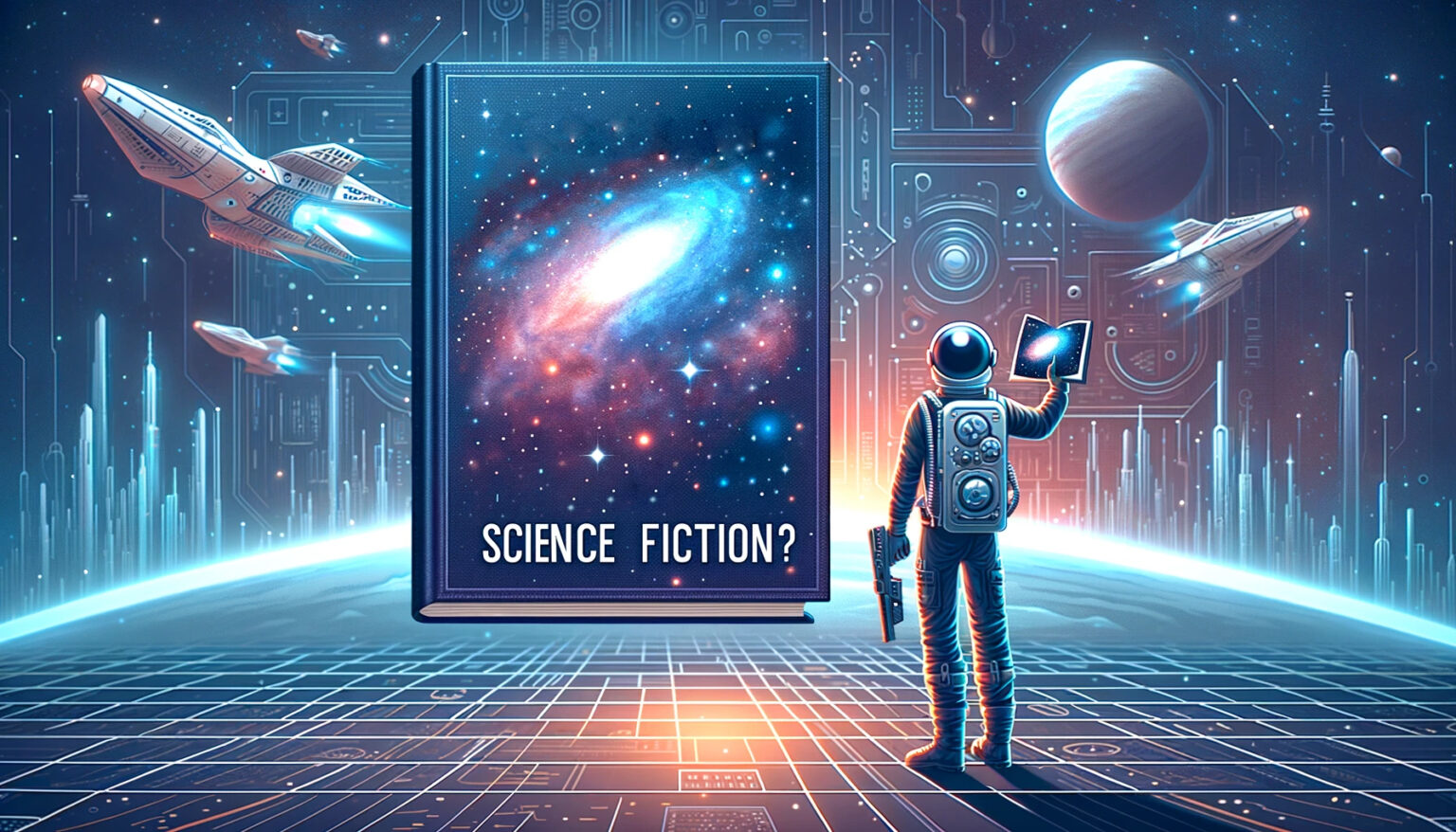Over the last twenty years, the publishing landscape has witnessed a dramatic transformation, particularly in the science fiction genre. This evolution has been predominantly fueled by the rise of self-publishing platforms that have democratized the process of publishing science fiction, making it more accessible than ever before. These platforms, enhanced by technological advancements, enable science fiction authors to publish their work with minimal initial investment. Features like print-on-demand further streamline the production of physical books, reducing costs and simplifying logistics.
This accessibility has ushered in a new era for aspiring science fiction writers, offering them the freedom to bypass traditional publishing barriers. Self-publishing empowers authors to experiment with innovative ideas and complex narratives that may not conform to mainstream expectations. Additionally, it provides a direct pathway to connect with readers, gather feedback, and organically grow their audience—critical components for success in today’s digital-first literary world.
For emerging science fiction authors, self-publishing is not merely an alternative; it is a strategic choice that aligns with the genre’s intrinsic movement toward boundary-pushing creativity. It offers writers complete control over their creative and marketing endeavors. This is crucial for those looking to fully realize and retain the integrity of their work. As the publishing environment continues to evolve, self-publishing stands as a vital force in the thriving domain of science fiction literature.
The Benefits to Self-Publish Your Science Fiction Book
One of the most significant advantages of self-publishing for writers of science fiction novels is the unparalleled level of creative control it offers. Traditional publishing often involves multiple rounds of editing, where suggestions from editors and publishers may lead to changes in story arcs, character development, or thematic elements to align with market trends and editorial policies. In contrast, self-publishing places the reins firmly in the hands of the authors, allowing them to maintain their original vision without compromise.
This freedom is particularly valuable for science fiction novels, where the uniqueness of the setting, plot, and technology can be pivotal to a book’s identity and appeal. Self-published authors of science fiction novels can experiment with unconventional narratives, diverse characters, and complex themes that might be deemed too risky or niche by traditional publishers, evaluating self-publishing platforms and understanding the process of getting a science fiction novel published while weighing the pros and cons of traditional publishing versus self-publishing.
Your Publishing Journey Awaits – Start NowFaster Time to Market
Self-publishing significantly shortens the timeline from manuscript completion to reaching readers. In traditional publishing, the process can be lengthy—often taking between 18 to 24 months post-acceptance to see a book on shelves. This includes time for extensive editing, marketing preparations, and distribution arrangements. However, with self-publishing, once the final draft is ready and the author has completed their editing and formatting, the book can be published in as little as a few weeks.
Platforms such as Amazon’s Kindle Direct Publishing allow for almost immediate listing once the upload is complete. This rapid turnaround is a crucial advantage in a fast-moving field like science fiction, enabling authors to capitalize on current trends and technologies and to keep pace with the expectations of the sci-fi readership, who often crave new and exciting content.
Higher Royalties and Profit Potential
Financially, self-publishing offers a more lucrative deal for authors compared to traditional publishing routes. While traditional publishers typically offer royalties between 10% to 15% of the book’s selling price, self-published authors can earn between 40% to 70% royalties on retail price, depending on the platform and pricing strategy. This significant difference means that self-published authors can potentially earn more, even with lower sales volumes.
Moreover, controlling the pricing strategy allows authors to adjust prices in real time based on market demand, participate in promotions, and experiment with different sales tactics such as bundling books or offering initial launch discounts. For science fiction writers, who often cultivate dedicated but niche audiences, these higher per-unit profits make self-publishing an attractive and viable financial model.
Niche Market Accessibility
Science fiction thrives on its ability to explore specific, often esoteric, themes that may not have broad appeal. Self-publishing is particularly beneficial for reaching niche markets, as it bypasses the commercial constraints of traditional publishers that target broader audiences. Self-published authors can tailor their content and marketing efforts to reach specific groups interested in particular sub-genres, such as cyberpunk, space opera, or hard science fiction.
This targeted approach is not only more efficient but also builds a loyal readership more effectively. Platforms that support self-publishing often provide tools to analyze reader demographics and sales data, enabling authors to fine-tune their approach. Furthermore, the online communities around these niche markets facilitate direct engagement with readers, enhancing feedback and fostering a dedicated fan base that is highly engaged with the author’s work. This close-knit relationship between authors and readers in the sci-fi community often leads to better reader retention and more successful series or sequels.
Challenges of Self-Publishing Sci-Fi Novels
While self-publishing offers numerous benefits, it also presents significant challenges, particularly regarding quality control and maintaining professionalism. One of the major hurdles self-published authors face is ensuring their work meets the high standards that readers expect from traditionally published books. Unlike traditional publishers, who have teams dedicated to editing, formatting, and designing, self-publishing authors must either acquire these skills themselves or outsource them to professionals.
The importance of hiring freelance editors cannot be overstated. A good editor does more than correct grammar; they help clarify ideas, enhance story flow, and ensure consistency, which is crucial for the complex worlds and intricate plots typical of sci-fi novels. Skipping this step can lead to negative reader reviews and poor sales, as even the most captivating stories can be marred by distracting errors and unclear writing.
Similarly, cover design is another critical aspect where professionalism is key. The adage “don’t judge a book by its cover” does not hold in the marketplace. A professionally designed cover makes a book stand out on crowded platforms and signals quality to potential readers. It is often the first indication of the effort and professionalism an author has invested in their book, impacting a reader’s decision to purchase. The role of a professional cover artist in this process cannot be understated; they are instrumental in creating a book cover that not only stands out but also effectively attracts readers in the competitive sci-fi genre.
Self-published authors must either invest time to learn these skills or invest money to hire experienced professionals. This upfront cost can be significant, but it is essential for competing effectively in the sci-fi genre, where visuals and detailed storytelling play a significant role in attracting and retaining readers. The investment in high-quality editing and design not only enhances the professionalism of self-published books but also significantly increases their marketability and potential success.
Marketing and Distribution
Marketing and distribution represent significant challenges for self-published science fiction authors. Unlike traditional publishing where the publisher often handles marketing and has established channels for book distribution, self-published authors must navigate these crucial steps on their own. This process can be daunting, as effective marketing requires both time and expertise that many authors may not initially possess.
For distribution, platforms like Amazon’s Kindle Direct Publishing (KDP) offer relatively straightforward methods for uploading and selling books. These platforms can place books in front of millions of potential buyers with options for both eBooks and print-on-demand services. However, simply listing a book on these platforms does not guarantee sales; visibility is heavily influenced by the author’s marketing efforts.
Effective marketing strategies might include building an online presence through social media, author websites, and blogs, as well as engaging with science fiction forums and communities. Email marketing, through newsletters, provides a direct line to readers, offering updates, promotions, and engagement opportunities. Additionally, authors often need to explore various forms of paid advertising, such as ads on social media platforms, Amazon, or genre-specific websites to boost visibility.
Each of these marketing avenues requires a unique skill set and a substantial time commitment. Learning how to best utilize these tools and understand the analytics provided by platforms can be overwhelming, but it is essential for the book’s success. The distribution through large platforms, while providing reach, also places books in a highly competitive market, where distinguishing one’s work becomes the primary challenge.
Your Publishing Journey Awaits – Start NowFinancial Investment
The financial investment required for self-publishing can be substantial and is often a barrier for many emerging authors. Key areas where expenses accrue include professional editing, cover design, and marketing efforts, all crucial for a book’s success. Hiring a professional editor and a cover designer ensures that the book meets industry standards and appeals aesthetically to potential readers. The costs for these services vary widely but can range from a few hundred to several thousand dollars depending on the professionals’ expertise and the complexity of the work.
Marketing expenses also add up quickly. Paid advertising campaigns, whether through social media platforms, Google Ads, or Amazon, require not only money but also an understanding of targeting and optimizing ads to ensure they reach the right audience without squandering resources. Additional costs might include website hosting for an author page, promotional materials, and possibly hiring a marketing consultant or publicist experienced in the genre.
For many authors, these costs must be paid out of pocket, often before any revenue from the book sales begins to flow in. While these investments are critical for achieving professionalism and visibility, they represent a significant risk, especially for new authors without an established reader base. This financial burden can be daunting, but it’s a necessary part of the self-publishing process that directly influences the quality and reach of a science fiction novel.
Case Studies of Successful Self-Published Sci-Fi Authors
The landscape of self-published science fiction is dotted with success stories of self-publishers that serve as both inspiration and instructional guides for aspiring authors. Below, we explore several notable self-published sci-fi authors who have made significant impacts in the genre, examining their strategies and the lessons they offer. These successful self-publishers demonstrate the high level of achievement possible through self-publishing, providing valuable insights for others looking to follow in their footsteps.
Andy Weir and “The Martian”
Andy Weir’s journey with “The Martian” is another exemplary case of self-publishing success. Originally, Weir posted chapters of “The Martian” on his personal blog for free. As its popularity grew, readers requested an easier way to download it, leading Weir to self-publish it on Kindle where it sold over 35,000 copies in three months. The lesson from Weir’s experience is the importance of accessibility and responsiveness to reader feedback. Weir’s active engagement with his reader community, combined with his detailed research and relatable character development, made “The Martian” a favorite, later turning into a major motion picture and a traditionally published book.
Lindsay Buroker and the “Fallen Empire” Series
Lindsay Buroker, an indie author known for her prolific output, has been self-publishing her sci-fi and fantasy novels for years, amassing a dedicated following. Her “Fallen Empire” series is particularly notable for its engaging storyline and complex characters. Buroker’s strategy involves leveraging multiple platforms for publishing and marketing her work, actively engaging with fans on social media, and writing in a serial format to keep readers coming back. Her approach demonstrates the power of direct reader engagement and the benefits of offering consistent, compelling content.
Lessons Learned
These authors demonstrate that several strategies are crucial for successful self-publishing in science fiction:
1. Engage with Readers: Direct interaction and responsiveness to feedback can shape the success of a book and provide valuable insights into what readers crave.
2. Quality and Professionalism: Maintaining high standards in writing, editing, and cover design is essential for competing with traditionally published books.
3. Use of Technology and Platforms: Effective use of self-publishing platforms and social media for promotion and distribution can significantly enhance an author’s reach.
4. Flexibility and Responsiveness: Being able to adapt to reader responses and market demands quickly is a significant advantage of self-publishing.
5. Consistent Output: Regularly producing new content keeps readers engaged and helps build and maintain momentum in sales.
These case studies not only inspire but also instruct upcoming authors on navigating the complex yet rewarding realm of self-publishing in science fiction.
Comparative Analysis: Self-Publishing vs. Traditional Publishing
Advantages of Traditional Publishing
Traditional publishing has long been esteemed for its professional handling of books, providing authors access to established editing, marketing, and distribution networks. One of the foremost benefits is the editorial support that authors receive. Publishers employ professional editors who refine manuscripts, enhancing clarity, style, and coherence, thus ensuring a high-quality final product. This support extends beyond mere copy editing to substantive editing, where structural issues are addressed, and content is optimized for the target audience.
In addition to editorial expertise, traditional publishers have robust marketing and promotional capabilities. They can secure media exposure, arrange book tours, and place books in prominent retail locations, activities often beyond the reach and budget of self-published authors. These marketing efforts are crucial for reaching a broad audience and can be particularly effective in genres like science fiction, where established fan bases look to publishers for the next big read. Publishers also have the advantage of connections with well-known book reviewers and literary awards, which can significantly boost an author’s profile.
Furthermore, traditional publishers handle all aspects of distribution, making books available in various formats across numerous channels. This includes not only major bookstore chains but also libraries and schools, markets that are less accessible to self-published titles. They manage the complexities of print runs, warehousing, and dealing with retailers, removing these burdens from the author. The financial risk is also mitigated as publishers invest in the book’s production and marketing upfront, meaning authors do not need to provide initial capital.
Why Self-Publishing Might Be a Better Option for Sci-Fi
Self-publishing presents distinct advantages for science fiction writers, chiefly revolving around greater creative freedom and the ability to directly engage with niche markets. In traditional publishing, decisions about a book’s content and style are often influenced by market considerations and the conservative preferences of publishers aiming to maximize sales. This can stifle innovation, particularly in a genre defined by exploration and pushing boundaries.
Sci-fi writers benefit from self-publishing because it allows them to explore more experimental themes and structures without editorial constraints. They can delve into unconventional topics that may not appeal to mainstream audiences but resonate deeply with specific segments of the sci-fi community. This freedom enables the creation of works that are true to the author’s vision and often leads to the development of cult followings.
Moreover, self-publishing accelerates the publication process, a crucial factor in a fast-evolving field like science fiction where staying relevant and timely can significantly impact a book’s reception and success. Self-published authors can quickly capitalize on current trends and technological advancements, which might take years to navigate through the traditional publishing process.
Additionally, the sci-fi genre often thrives in digital formats where a large portion of the audience resides. Self-publishing platforms like Amazon’s Kindle Direct Publishing cater perfectly to this audience, providing immediate global reach that traditional publishers may not prioritize. The ability to set their own prices and adjust them in real time allows authors to experiment with different sales strategies that can lead to higher royalties than those typically offered by traditional publishers.
In summary, while traditional publishing offers significant benefits in terms of professional handling and market reach, self-publishing may better serve sci-fi writers by offering them the independence to innovate freely, engage directly with their readers, and bring their books to market more swiftly.
Your Publishing Journey Awaits – Start NowThe Role of Digital Platforms and Print on Demand in Self-Publishing
Digital platforms and print-on-demand (POD) services have significantly revolutionized the self-publishing landscape, offering unprecedented access and flexibility for authors to publish and distribute their works. These advancements are particularly crucial in the realm of self-publishing, where authors seek both efficiency and reach.
Digital Platforms like Kindle Unlimited
Kindle Unlimited, a subscription service offered by Amazon, allows readers to access a vast library of books for a monthly fee. For self-published authors, particularly in genres like science fiction, Kindle Unlimited can be a game-changer. It opens up an avenue for new and independent authors to reach readers who might not otherwise purchase their books outright. Books enrolled in Kindle Unlimited are available to a broad audience, increasing the author’s visibility. Moreover, authors earn money based on the number of pages read, providing a potentially steady income stream that is not dependent on single-copy sales.
The presence of a book on Kindle Unlimited also encourages impulse reading. Readers are more likely to try a new author’s work when it is available as part of their subscription, reducing the financial risk associated with purchasing books from an unknown writer. This model can significantly benefit sci-fi authors whose works may target niche markets or present unconventional themes that might not thrive in traditional retail settings.
Print on Demand (POD) Services
Print-on-demand technology has transformed the economics of self-publishing by eliminating the need for large, upfront print runs and reducing the financial risks associated with unsold inventory. Platforms like Amazon’s CreateSpace or IngramSpark allow authors to sell physical books that are printed only when a customer places an order. This means authors can offer physical books without the initial capital investment traditionally required for printing, storing, and distributing inventory.
POD services not only make it feasible to sell print versions alongside eBooks but also enable authors to update their texts easily. This flexibility is invaluable for sci-fi authors who may wish to release revised editions in response to reader feedback or update the content to reflect evolving scientific or technological landscapes.
Importance of a Multi-Platform Presence
Having a presence across multiple digital platforms, including Amazon, Barnes & Noble, Apple Books, and others, is crucial for maximizing a book’s sales and reach. Each platform has its unique audience and promotional opportunities, which can increase an author’s visibility across different segments of the market. Additionally, utilizing various platforms protects against the volatility of relying on a single sales channel and helps capture a wider audience, including international readers.
The combination of digital platforms and POD services empowers authors with tools to manage their publishing journey more efficiently and effectively. For self-published sci-fi authors, leveraging these technologies means better control over their work’s publication, broader distribution, and the ability to reach and maintain a global audience without significant upfront costs.
Self-Publishing with Spines
Spines is a modern publishing platform that streamlines the self-publishing process, making it accessible and straightforward for authors from all genres. This innovative platform offers a suite of tools designed to transform your manuscript into a professionally published book, complete with global distribution. Here’s a simple step-by-step guide on how to publish with Spines, demonstrating why it’s a leading choice in today’s digital-first world.
1. Manuscript Upload: Start your journey by uploading your manuscript through Spines’ user-friendly dashboard. Enter essential details like your book’s title and author name. Immediately upon upload, receive a copyright protection certificate from Spines, ensuring your work is legally safeguarded right from the outset.
2. Intuitive Cover Design: First impressions matter, and Spines helps you make a strong one. Utilize the AI-powered cover generator to create your book’s cover with no technical expertise needed. If you already have a cover design, you can easily upload it; if not, the platform’s tools guide you in crafting a visually appealing cover.
3. Proofreading: Spines’ AI technology scans your manuscript for grammatical errors and suggests enhancements, providing a comprehensive and quick editing process. Professional proofreading services are also available for those who prefer a human touch.
4. Formatting: Customize the internal layout of your book. Choose from various formatting styles and types for your initial paragraphs, and select the ideal cover and paper type for your book’s physical version, be it paperback or hardcover, matte or glossy.
5. Audiobook Creation: Should your plan include an audiobook, Spines’ advanced AI can create one in your chosen voice. The platform ensures that your audiobook reflects your narrative’s tone perfectly, whether you oversee the final product or use their proofreading services.
6. Order Your Copies: Specify how many copies you need and where they should be shipped. Spines handles all aspects of production, whether you choose eBooks, print copies, or both, allowing you to relax and await the arrival of your published work.
7. Global Distribution: As your book nears publication, Spines doesn’t just prepare it for bookshelves but ensures it reaches audiences worldwide. With optimized metadata, your book is distributed through major channels like Amazon and Barnes & Noble, ensuring your story not only reaches but resonates with readers globally.
Publishing with Spines integrates all these steps into a seamless journey, demonstrating why it’s an excellent option for authors seeking complete control with minimal hassle. This modern approach to publishing empowers authors to focus more on their writing and less on the complexities of publication, making it an ideal choice in the contemporary literary marketplace.
Your Publishing Journey Awaits – Start NowPractical Tips for Aspiring Self-Published Sci-Fi Authors
Embarking on the path of self-publishing, particularly for sci-fi authors, begins with a solid foundation—your manuscript. Begin by fleshing out your sci-fi concept thoroughly. Whether it’s space opera, cyberpunk, or another subgenre, ensure your world-building is robust and your characters are well-developed. Utilize tools like Scrivener for organizing your research and chapters, or Trello for tracking your writing progress and deadlines.
Once your draft is complete, the next crucial step is revision. Seek feedback from beta readers who are fans of the genre, as their insights can be invaluable for understanding how your audience might perceive your story. Consider hiring a professional editor to refine your manuscript’s language and structure, focusing on clarity, pacing, and engagement to ensure your ideas resonate clearly and compellingly.
Deciding to self-publish should come after thorough research into different publishing platforms and understanding their terms, royalties, and the degree of control they offer. Equip yourself with knowledge about the necessary steps post-writing, such as ISBN acquisition, copyright registration, and deciding whether to go exclusive with platforms like Amazon’s Kindle Direct Publishing or to distribute your book widely.
Maintaining the Course
After publishing your sci-fi novel, the journey shifts towards sustaining sales and engaging with your readers. Effective marketing strategies are critical at this stage. Develop a comprehensive marketing plan that includes social media campaigns, email newsletters, and possibly a launch event. Platforms such as Facebook, Twitter, and Instagram can help you reach a broader audience, while tools like Mailchimp are great for managing email campaigns.
Continuously engage with your readers through regular updates, blog posts, or by starting discussions about the themes in your book. This ongoing interaction can build a loyal readership and help maintain interest in your work. Additionally, consider participating in science fiction conventions and online forums where you can connect with fans and other authors.
Another vital aspect of sustaining your writing career is to keep producing new content. Whether it’s sequels, spin-offs, or new projects, staying productive keeps your audience engaged and helps establish your brand in the sci-fi community. Finally, always be open to learning—stay updated with the latest trends in self-publishing and the sci-fi genre to continually refine your approach and adapt to changes in the market.
Conclusion: Is Self-Publishing Right for You?
Throughout this exploration of self-publishing, particularly within the science fiction genre, we’ve examined the numerous advantages and challenges that come with taking control of your publishing journey. From the freedom of complete creative control and potentially higher earnings to the challenges of quality assurance, marketing, and financial investment, self-publishing presents a unique set of opportunities and hurdles.
Self-publishing empowers authors with the ability to quickly bring their work to market, directly engage with niche audiences, and retain greater royalties. However, it also requires a significant commitment to managing every aspect of the book’s production—from editing and cover design to marketing and distribution. Platforms like Spines simplify this process, but the responsibility ultimately rests on the author’s shoulders.
As you consider whether self-publishing is the right path for you, assess your personal goals, resources, and willingness to navigate the complexities of publishing independently. If you value autonomy, possess an entrepreneurial spirit, and are ready to tackle the marketing and distribution of your work, self-publishing could be a highly rewarding avenue. Reflect on what you hope to achieve with your writing, and decide if the self-publishing journey aligns with your vision and capabilities.
Your Publishing Journey Awaits – Start Now






